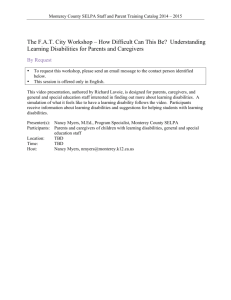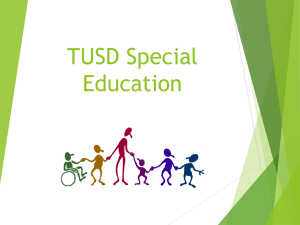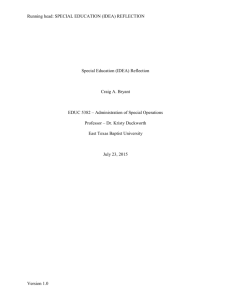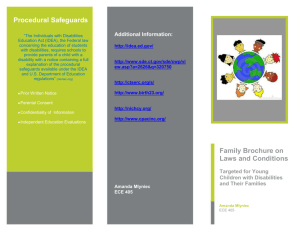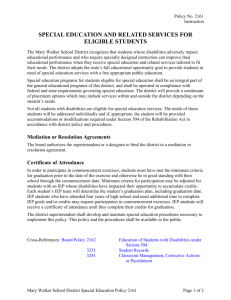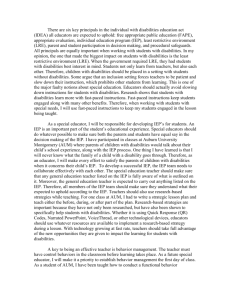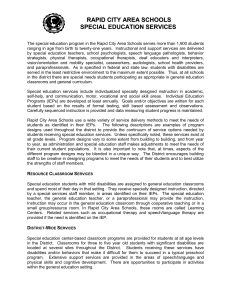J. Natural Environment Services for Early Childhood Special
advertisement
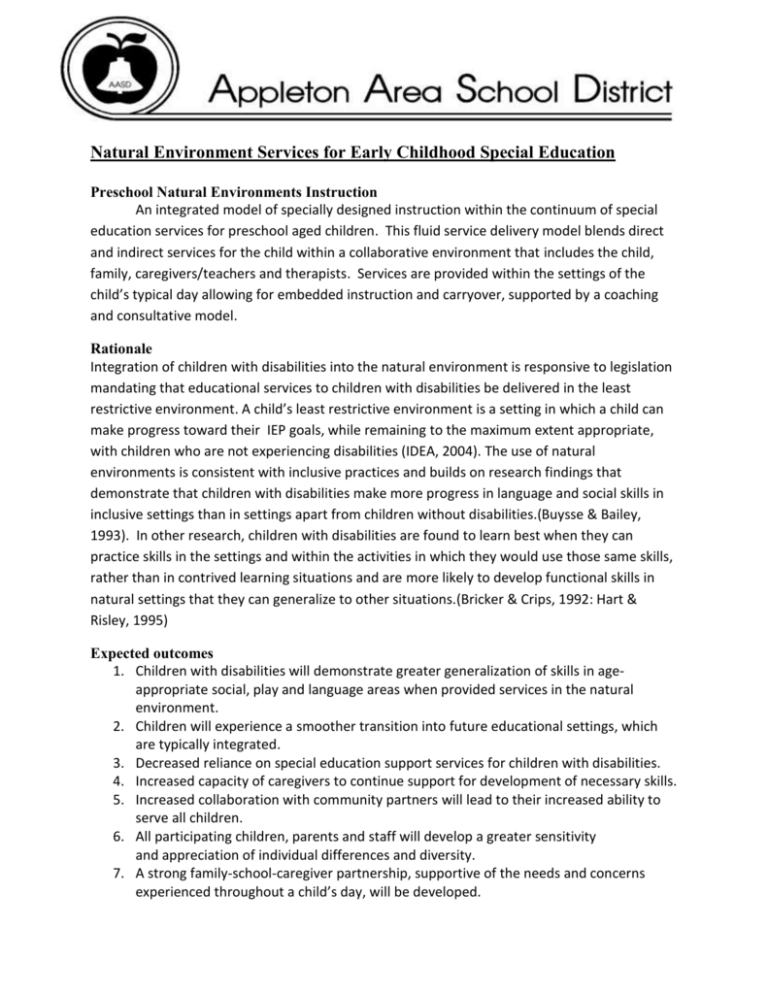
Natural Environment Services for Early Childhood Special Education Preschool Natural Environments Instruction An integrated model of specially designed instruction within the continuum of special education services for preschool aged children. This fluid service delivery model blends direct and indirect services for the child within a collaborative environment that includes the child, family, caregivers/teachers and therapists. Services are provided within the settings of the child’s typical day allowing for embedded instruction and carryover, supported by a coaching and consultative model. Rationale Integration of children with disabilities into the natural environment is responsive to legislation mandating that educational services to children with disabilities be delivered in the least restrictive environment. A child’s least restrictive environment is a setting in which a child can make progress toward their IEP goals, while remaining to the maximum extent appropriate, with children who are not experiencing disabilities (IDEA, 2004). The use of natural environments is consistent with inclusive practices and builds on research findings that demonstrate that children with disabilities make more progress in language and social skills in inclusive settings than in settings apart from children without disabilities.(Buysse & Bailey, 1993). In other research, children with disabilities are found to learn best when they can practice skills in the settings and within the activities in which they would use those same skills, rather than in contrived learning situations and are more likely to develop functional skills in natural settings that they can generalize to other situations.(Bricker & Crips, 1992: Hart & Risley, 1995) Expected outcomes 1. Children with disabilities will demonstrate greater generalization of skills in ageappropriate social, play and language areas when provided services in the natural environment. 2. Children will experience a smoother transition into future educational settings, which are typically integrated. 3. Decreased reliance on special education support services for children with disabilities. 4. Increased capacity of caregivers to continue support for development of necessary skills. 5. Increased collaboration with community partners will lead to their increased ability to serve all children. 6. All participating children, parents and staff will develop a greater sensitivity and appreciation of individual differences and diversity. 7. A strong family-school-caregiver partnership, supportive of the needs and concerns experienced throughout a child’s day, will be developed. Program components Services available throughout the school district such as Early Childhood Special Education, Speech and Language Therapy, Occupational Therapy, Physical Therapy, and services for children with vision and hearing disabilities may be provided within the child’s natural environment. Natural environments may include but are not limited to: Preschool, Home, Child Care, and Community Programs and Locations. The amount of service provided may range from limited monthly visits to multiple weekly visits as determined by the child’s IEP team. In making a decision regarding whether to service the child in their natural environment, the IEP team will follow a placement consideration process. Within this process, the child’s ability to make progress in their natural environments is the first consideration. Other items of consideration are included in the district Placement Consideration Document. Team planning and consultation time with caregivers is expected and included as elements of the IEP. Direct service involves the teacher and/or therapist providing IEP based instruction directly with the child either individually or in a group setting Indirect Service supports the direct service instruction through a variety of methods which may include o Coaching involves observation, demonstration and feedback provided with the child’s caregivers with the goal of building their capacity to carryover the instruction provided by the teacher and/or therapist. o Collaboration involves the sharing of ideas. The specific training and skills of the teacher and/or therapists and the caregivers knowledge of the child and the environments are brought together to cooperatively design services for the child. o Consultation involves assessing the progress of the child within the natural environment and providing feedback and dialogue with the caregiver to further enhance the strategies and supports that caregiver provides. General Information/AASD Philosophy Modified 4/21/10
